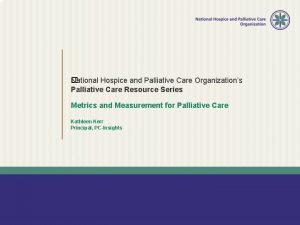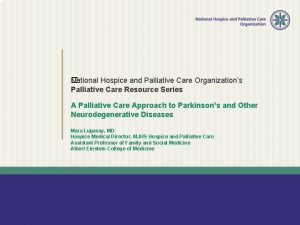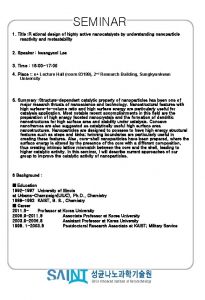N ATIONAL R E S E A R







- Slides: 7

N ATIONAL R E S E A R C H CENTRE “Kurchatov institute” NRC KI INSTITUTE OF TOKAMAK PHYSICS ASTRA simulations of ITER long pulse scenarios V. Leonov Kurchatov Institute, Moscow, Russia 7 th Integrated Operation Scenarios Topical Group Meeting Kyoto, Japan, 18 -21 October 2011

Motivation • The work have been done in the modeling activity IOS-JA 9 which includes: to find the operational space for long pulse operation to obtain the optimal parameters for this operation. (A. Polevoi - IO) Phase I (A. Polevoi) Assessment of operational space (OS) (Ip, n, etc. ) for long-pulse operation by 1. 5 D modelling (0) Start from ITER inductive baseline scenario (Ip=15 MA, Pfus =500 MW, Q = 10, Dt. FT =400 s) (1) Keeping the same input and assumptions as for 500 MW baseline scenario with basic set of CD: 16. 5 MW on- + 16. 5 MW off-axis NBCD+ 20 MW ECCD --- Density scan for each of the models Phase II (A. Polevoi) Sensitivity studies for modelling assumptions (pedestal, Zeff, n(0)/<n>, etc) In this presentation: Sensitivity to high-Z impurity contamination (W, Ar) V. Leonov 7 th IOS TG Meeting 18 -21 Oct. 2011, Kyoto, Japan NATIONAL RESEARCH CENTRE «KURCHATOV INSTITUTE» INSTITUTE OF TOKAMAK PHYSICS

Simulations have been carried out with the ASTRA transport code with fixed boundary equilibrium - empirical scaling-based plasma transport model - in the pedestal region ( N > 0. 94) transport coefficients decrease to i. NC level - He pumping speed was selected to keep He / E = 3 at 15 MA - Boundary conditions: Tes = 0. 2 ke. V, nes = 0. 3 <ne>, - impuririties: 1) prescribed impurity density profiles ~ ne profile + radiation (in the coronal approximation) 2) simulation of impurity ionization state, transport (including NC by NCLASS code) and radiation by ZIMPUR impurity code (boundary impurity flux was selected to produce necessary impurity contamination) - Flat-top length: Dt. FT = [Vs] / Ures[V] = (240 -14*Ip) / Ures; Ures= POH/IP Fl =0. 8*Pfus* t. FT V. Leonov 7 th IOS TG Meeting 18 -21 Oct. 2011, Kyoto, Japan RUSSIAN RESEARCH CENTRE «KURCHATOV INSTITUTE» INSTITUTE OF TOKAMAK PHYSICS

Plasma current – density scan for long pulse operation • Start from 15 MA 500 MW scenario • H&CD: 16. 5 MW on +16. 5 MW off-axis NBI + 20 MW ECR • HH = 1 • n. Ar / ne =0. 12% n. Be / ne =2. 0% -- at Ip=10 MA, ne ~5 1019 m-3 t ~ 1 hour, total Fl as in 15 MA scenario (small power intensity) V. Leonov 7 th IOS TG Meeting 18 -21 Oct. 2011, Kyoto, Japan NATIONAL RESEARCH CENTRE «KURCHATOV INSTITUTE» INSTITUTE OF TOKAMAK PHYSICS 4

Sensitivity study (performance dependence on W contamination) ASTRA + ZIMPUR n. Ar = 0. n. Be / ne= 2. 0% (by boundary flux) HH = 1. 05 2 limits : 1 – boundary of reference parameters (Q ~ 5; t ~ 1000 s) at n. W / ne ~ 0. 002% 2 – more strong limit (danger of H L-mode transition) at n. W / ne > 0. 0027 - 0. 003% V. Leonov 7 th IOS TG Meeting 18 -21 Oct. 2011, Kyoto, Japan NATIONAL RESEARCH CENTRE «KURCHATOV INSTITUTE» INSTITUTE OF TOKAMAK PHYSICS 5

Sensitivity study (performance dependence on Ar contamination) n. W = 0. n. Be / ne= 2. 0% (by boundary flux) HH = 1. 05 2 limits : 1 – boundary of reference parameters (Q ~ 5; t ~ 1000 s) at n. Ar / ne ~ 0. 12% 2 – more strong limit (danger of H L mode transition) at n. Ar / ne > 0. 2% -- narrow n. Ar region to control Prad V. Leonov 7 th IOS TG Meeting 18 -21 Oct. 2011, Kyoto, Japan NATIONAL RESEARCH CENTRE «KURCHATOV INSTITUTE» INSTITUTE OF TOKAMAK PHYSICS 6

Summary and future work • Results of the plasma current-density scan (starting from the basic inductive scenario) for comparison with other models and codes are presented -- work in progress and will be continued. • Investigation of impurity influence to hybrid scenario performance shows high sensitivity to high-Z impurity (W, Ar) contamination (narrow operation region) -- work will be continued for other impurities (Be, C, Ne) and discharge parameters. • OS and sensitivity analysis for SS scenarios will be started also. V. Leonov 7 th IOS TG Meeting 18 -21 Oct. 2011, Kyoto, Japan RUSSIAN RESEARCH CENTRE «KURCHATOV INSTITUTE» INSTITUTE OF TOKAMAK PHYSICS





